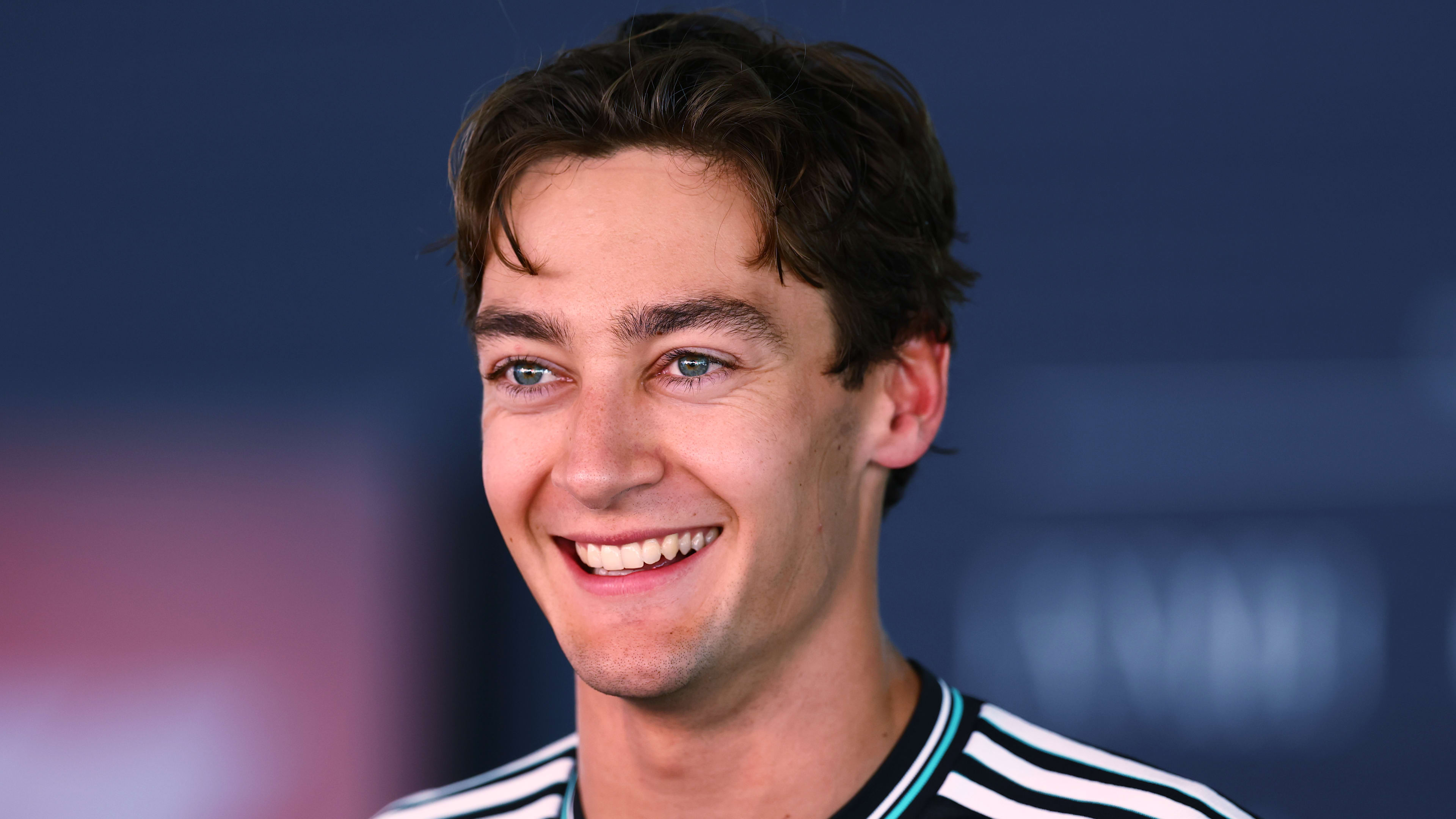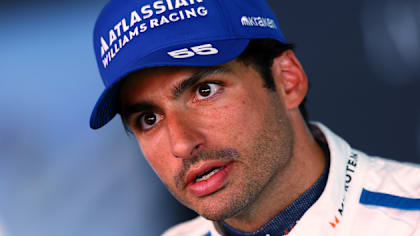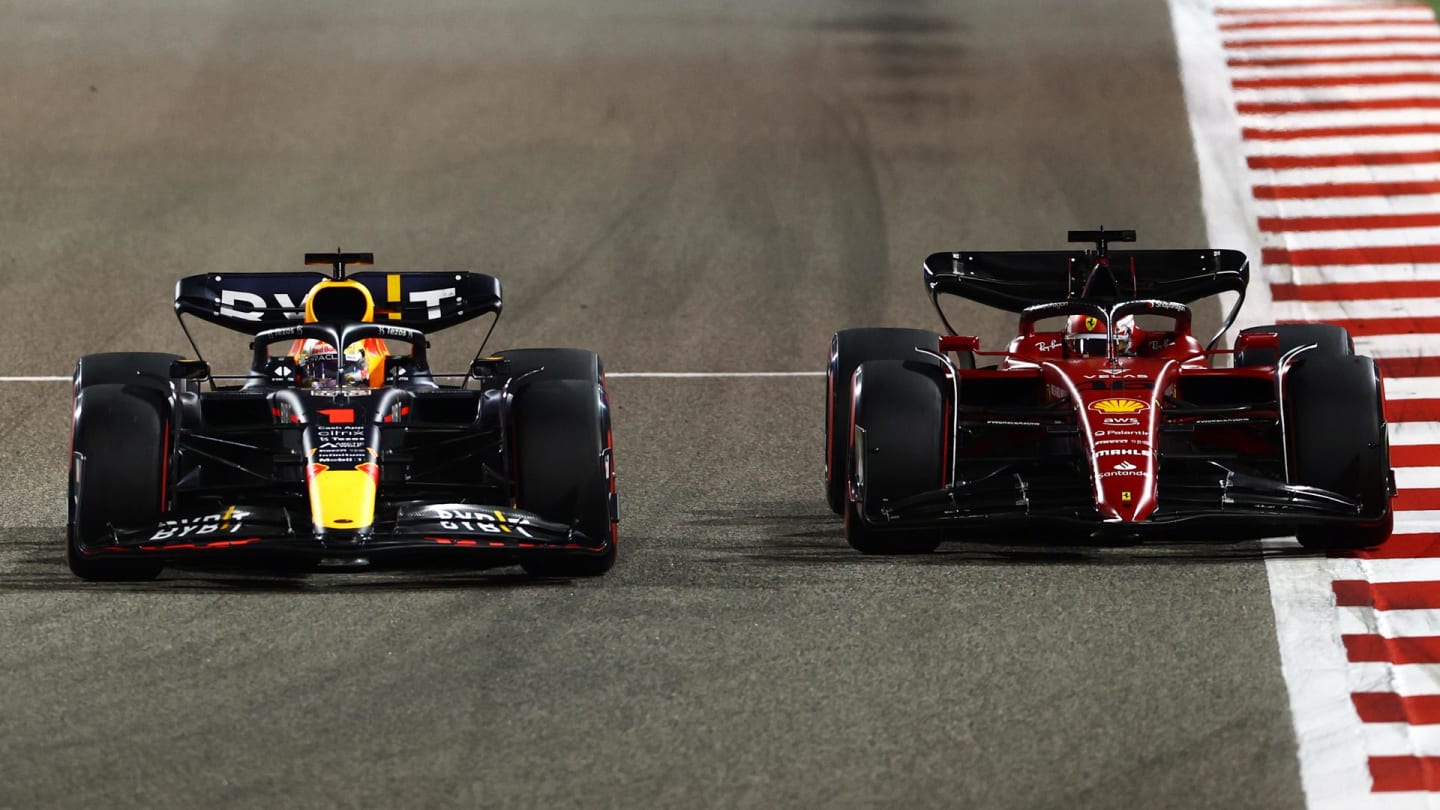
Feature
PALMER: Why Leclerc and Verstappen’s Bahrain battle heralded a new era of wheel-to-wheel racing

Share

There’s been plenty of buzz around the new cars this year. They look great, they are giving the drivers more of a challenge in the cockpit – but if there was one moment in the Bahrain Grand Prix that really outlined the excitement of it all and the reason this generation of cars was brought in, it was that battle for the lead.
Charles Leclerc and Max Verstappen both led the way for their teams, and it was very difficult to split them throughout the entire weekend.
They’ve had brilliant scraps in the past, including a race-deciding Austrian Grand Prix tussle in 2019 and an epic dice at Silverstone in the following race, but this scrap was the best of the lot, and it was also some of the best racing action Formula 1 has seen for a long time – and for a few reasons.
The duration of the wheel-to-wheel scrapping was just hard to believe. When Leclerc came out of the pits on Lap 16 he was immediately harried by Verstappen, who had his soft tyres in the zone and was right with him through the first sector.
Leclerc hadn’t shaken Verstappen off until halfway around Lap 19, and in the meantime, the two had swapped places a total of six times.
TECH TUESDAY: The power unit gains behind Ferrari's Bahrain Grand Prix 1-2
Jolyon Palmer's Analysis: Leclerc & Verstappen's epic Bahrain battle
How was this fight able to go on for so long?
Firstly, because of the tactics involved.
Against some expectations for 2022, the DRS still proved powerful, so each time Verstappen was able to get within one second, he could close in and make a legitimate pass on Leclerc, especially the first time of asking when he had a huge closing speed.
But because of the way the DRS works in Bahrain, Leclerc was then able to pick up that extra speed back into Turn 4, which meant Verstappen was turned immediately into the defender as the roles kept switching. In this case DRS helped the closing car stay in the fight.
READ MORE: Red Bull are still favourites say Ferrari, despite winning start in Bahrain
Leclerc was also driving tactically, like he tried to do in Austria back in 2019. Having been gazumped by Verstappen in the first instance, he quickly realised the power of the retaliation DRS into Turn 4. This meant that he no longer defended the inside into Turn 1 on the subsequent two laps, allowing the Red Bull a more simple pass each time, but ensuring he had DRS on the exit and a huge run back at the lead.
In this instance the track lent itself perfectly to this style of racecraft, and Leclerc managed it just about to perfection, effectively allowing the places to be traded – rather than fighting tooth-and-nail at Turn 1 to then be left a sitting duck at Turn 4.
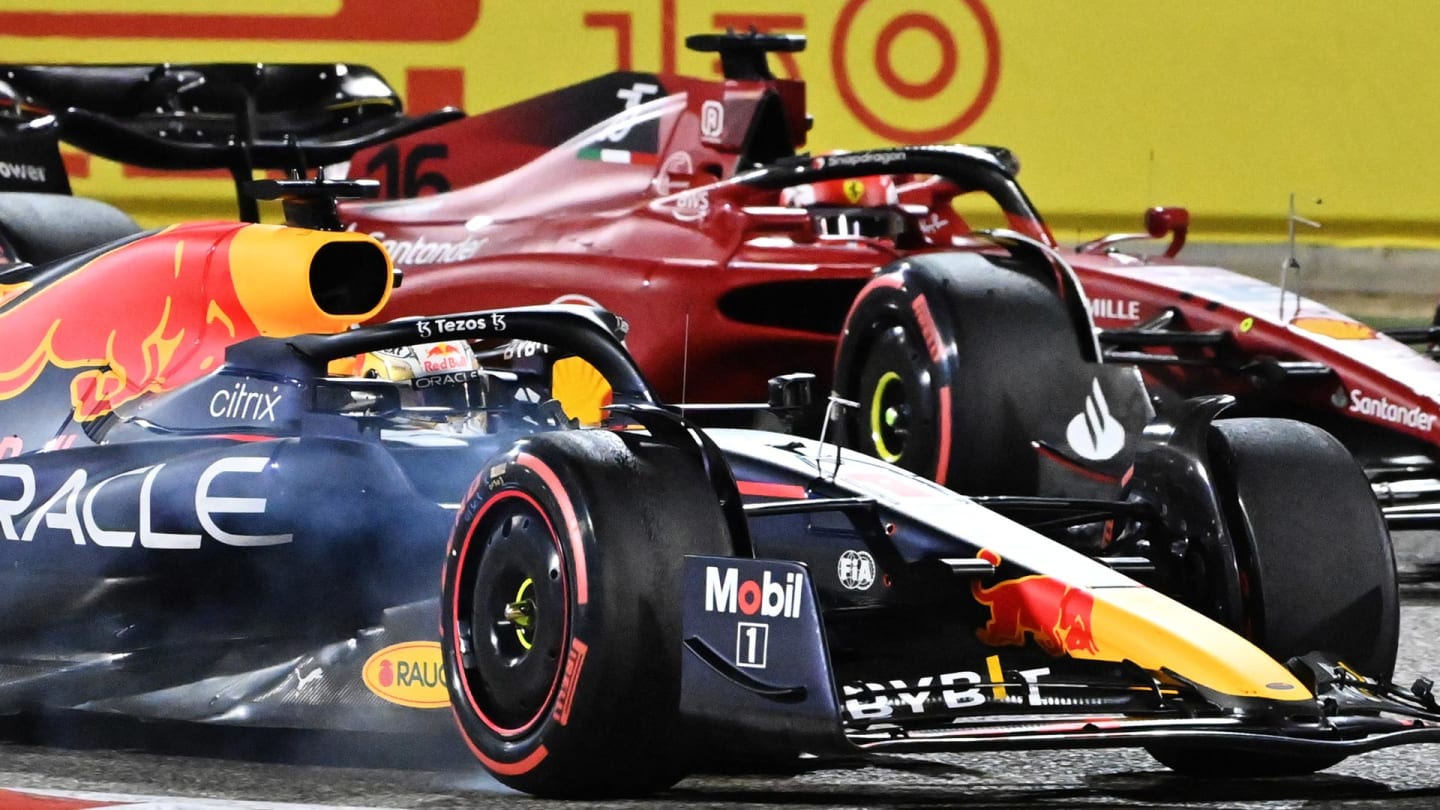
Leclerc knew the power of having DRS on the run to Turn 4
The new generation of cars show their stuff
The cars have also made a huge difference. Clearly, the aerodynamic overhaul that has taken place has enabled cars to follow more closely. Maybe we will see the true effect at a circuit where overtaking is more notoriously difficult, but in Bahrain it allowed Verstappen to stay close to Leclerc through the twisty parts of the lap, where, in days of old, you’d lose more downforce.
The high-speed section of Turns 11 through to 13 have always been tricky to follow through and usually spread the cars out slightly between the back straight and the DRS zone on the main straight. This was evident notably with Max Verstappen 12 months ago when he slithered wide at Turn 13 with oversteer behind Lewis Hamilton in the dying laps of the race after rescinding the lead – something he could never recover from. That was in spite of him having a much greater pace advantage on the Mercedes than he had over the Ferrari in 2022.
He undoubtedly could stay closer this year, and with the dirty air being less of a hindrance, the tyres weren’t overheating as badly either, thanks to reduced sliding around and possibly the change in Pirelli construction as well.
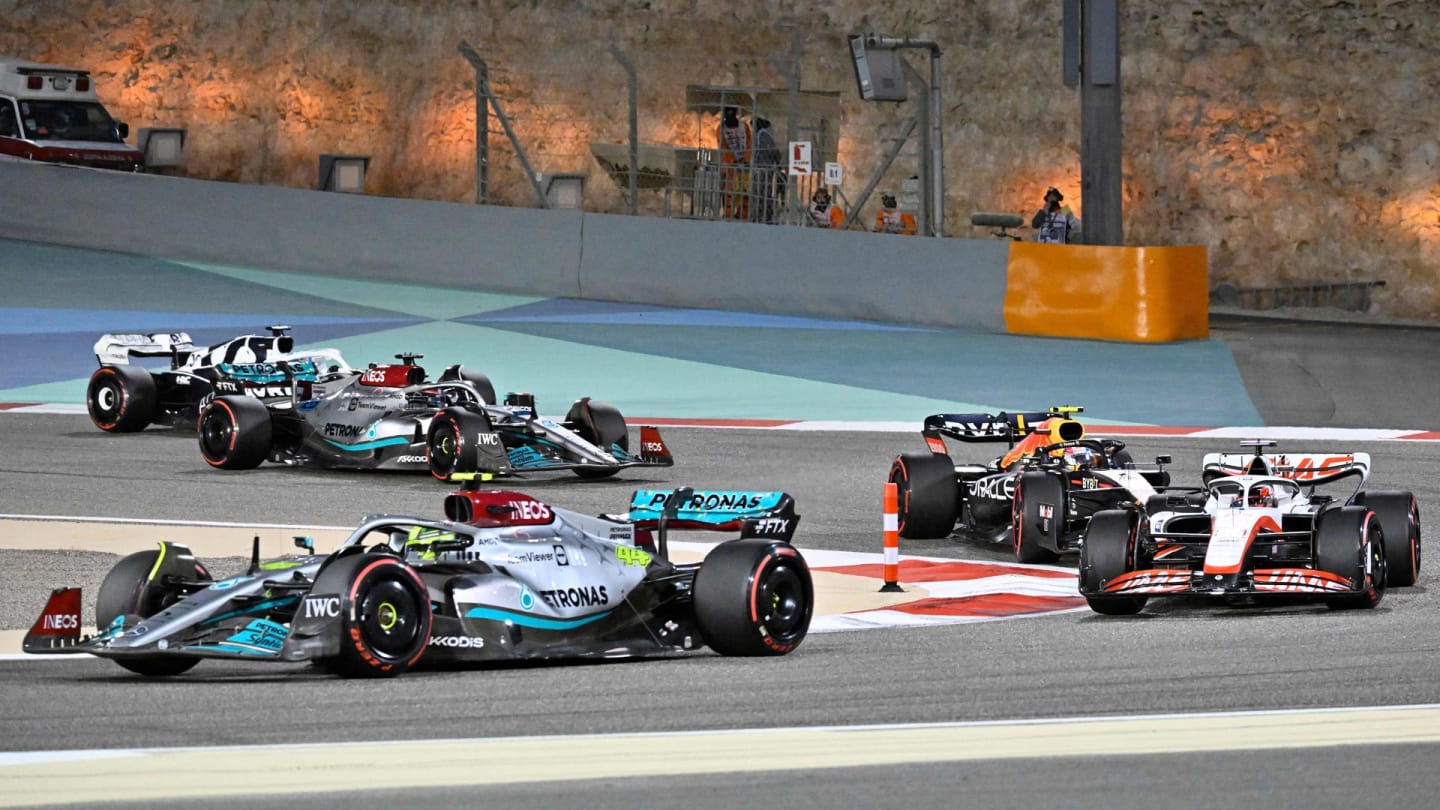
It's clear that following has become far easier this year with the brand-new breed of cars
Respect on track
Finally, credit has to go to both drivers as well for racing fairly and respectfully, something which seemed occasionally to get forgotten in 2021, and in recent years in general.
There’s been a massive split in the ‘what is fair racing’ debate in current times, but I’ve always thought just forcing cars off wide isn’t conducive to good racing action.
If Verstappen was racing Leclerc as he did in Austria in 2019, or with Hamilton for much of last year, the battle could have ended on Lap 17, and in more acrimony.

Leclerc and Verstappen fought hard, but fair
The Verstappen of old would probably have sent in a lunge back on Leclerc into Turn 4, the first time the Monegasque driver came back past him. It likely would have ended with both of them running wide in a repeat of Brazil last year, but he probably could have taken the position and then left the debate up to the stewards, as he did repeatedly at the end of last year.
The race officials have been a bit clearer with their expectations this year, that space must be left for cars in wheel-to-wheel combat, and maybe Verstappen had that in his mind – or maybe he’s just decided to play the long game in the championship and not risk it all at the first race. Either way, the fact that space was routinely given from both quarters kept this entertaining spectacle going for lap after lap.
With the Red Bulls running into trouble at the death, the reality is this battle didn’t count for much. But it does nonetheless set a stall out for what could be a terrific fight between these old adversaries this season, in cars that give them a chance to duke it out in a spectacular manner.
Let’s hope that both the battles, and the respect, remains for the rest of the year.
Tap here to find out more about F1 TV, including enhanced race coverage, exclusive shows, archive video and more.
YOU MIGHT ALSO LIKE
News ‘We’ve had worse Fridays!’ – Verstappen feeling ‘more positive’ after practice in Spain despite wanting ‘better feeling’ from car
News Sainz rues ‘very tricky’ Qualifying that left him in the ‘middle of nowhere’ at his home GP in Spain
FeatureF1 Unlocked PRACTICE DEBRIEF: Can Red Bull or Mercedes take the fight to McLaren at the Spanish Grand Prix?

Video HIGHLIGHTS: Relive the action from FP2 in Barcelona as Piastri heads the timesheets
